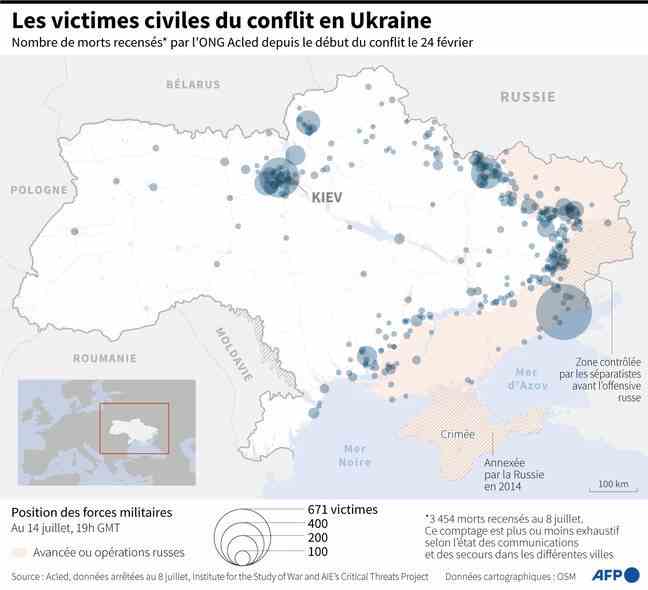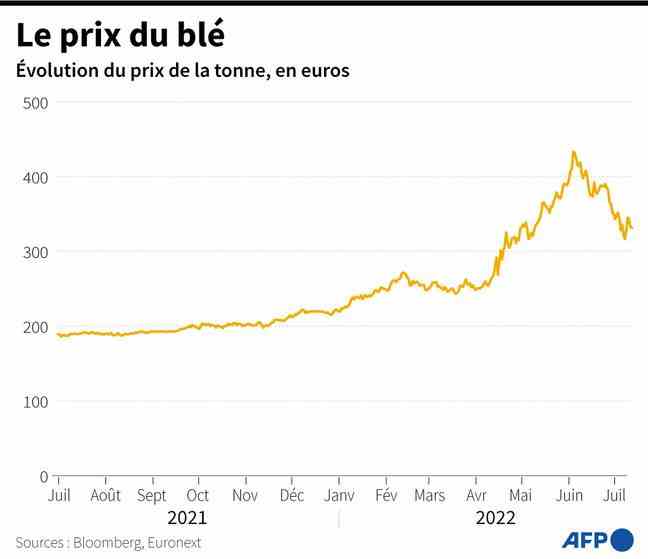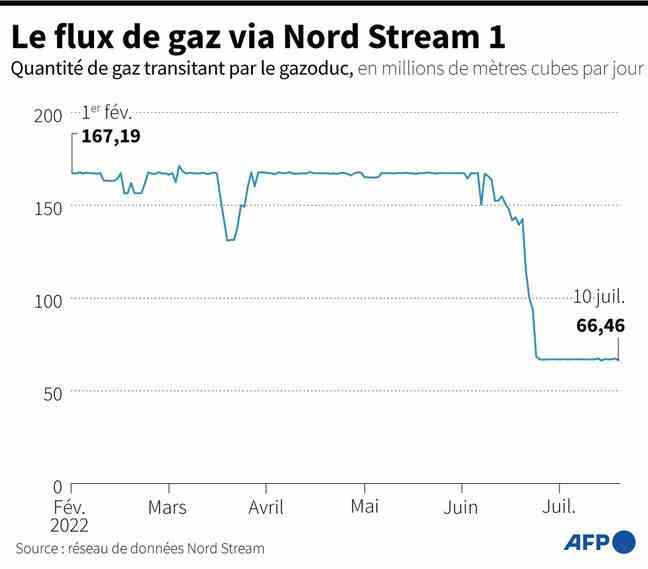On this 142nd day of war, Moscow continues to massively bomb Ukraine. Russian strikes on Vinnytsia, a city in central Ukraine, left at least 23 people dead on Thursday, raising international criticism. The Kremlin said on Friday it targeted a command meeting of Ukrainian forces, while kyiv says Russia has become a ‘terrorist state’
Ukraine, for its part, launched a counter-offensive several weeks ago to retake Kherson, the only regional capital captured by Moscow since February 24. While the front line remains relatively stable, these attacks are increasingly powerful, with new US and European rocket systems targeting arms depots. Here is a point in infographics on this new week of war in Ukraine, ending this Friday, 142nd day of conflict.
Bombardments and counter-offensive in the Donbass
Russia continues to shell Ukraine. On Thursday, the UN Secretary General said he was “appalled” and the European Union denounced new “atrocities” after Russian strikes on Vinnytsia, a city in central Ukraine, which left at least 23 dead, an “openly terrorist act” for Ukrainian President Volodymyr Zelensky.
Other strikes hit Mykolaiv and Kharkiv. They came precisely at a time when a conference on crimes committed in Ukraine was being prepared in The Hague, organized by the International Criminal Court (ICC), the European Commission and the Netherlands.
Ukraine, for its part, launched a counter-offensive several weeks ago to retake Kherson, the only regional capital captured by Moscow since February 24. While the front line remains relatively stable, these attacks are increasingly powerful, with new US and European rocket systems targeting arms depots.
Heavy civilian casualties

Analysis of satellite and social media photographs reveals a sharp increase in the number of burials in Russian-occupied regions of Ukraine, according to a report released Friday by an NGO. At the Starokrymske cemetery in Mariupol (southeast), for example, the authors of the report estimate that around 1,000 new graves are observable over a period of five months, between October 21, 2021 and March 28, 2022 – one month after the start. of the war.
The rate of burials then increased sharply with 1,141 new graves visible on satellite images between March 28 and May 12 and more than 1,700 others between May 12 and June 29, according to the authors of the report.
The United Nations human rights office puts the number of civilians killed in Ukraine at 5,000 since the start of the invasion, but acknowledges that the real toll is probably much higher. Ukraine estimates that 22,000 civilians died in the city of Mariupol alone, the scene of the heaviest fighting of the war so far.
The Wheat of War

Under the leadership of Turkey, discussions are continuing in an attempt to unblock Ukrainian cereals, which the world has sorely lacked since the beginning of the Russian invasion. The Russian Defense Ministry said on Friday that a “final document” will be ready shortly to allow the export of grain from Ukraine, after negotiations involving Moscow, kyiv, Ankara and the UN this week.
According to the spokesperson for the Russian ministry, Igor Konashenkov, the measures proposed by Moscow should make it possible to prevent “the logistics chains concerned from being used for arms deliveries to the kyiv regime”.
For its part, the German rail operator Deutsche Bahn said it was ready on Friday to “considerably” accelerate Ukrainian grain exports via its rail network. Some 20 million tonnes of grain are blocked in Ukrainian silos, particularly in Odessa (south), which cannot be exported by sea due to the war. Since the beginning of the war, the price of cereals, and in particular wheat, has increased, favoring food crises.
Moscow cuts gas taps

Nord Stream is currently shut down for ten days for maintenance reasons and European countries fear that Moscow will use a technical reason to permanently halt its deliveries and thus put pressure on them in the context of the conflict in Ukraine. Even before the shutdown of Nord Stream, Russia had sharply reduced deliveries in recent weeks, justifying them by the lack of Siemens turbines, necessary according to it to operate the compressor stations of the gas pipeline and of which several units have been sent to Canada. to repair.
On Wednesday, Gazprom could not guarantee the proper functioning of the gas pipeline, saying it was unable to confirm that it will recover a German turbine repaired in Canada. Difficulties around Nord Stream deliveries come as European countries scramble to fill their winter reserves.
“Russia uses energy, as it uses food, as a weapon of war”, regretted Emmanuel Macron. “We must now prepare for a scenario where we have to do without Russian gas entirely,” warned the French president.

